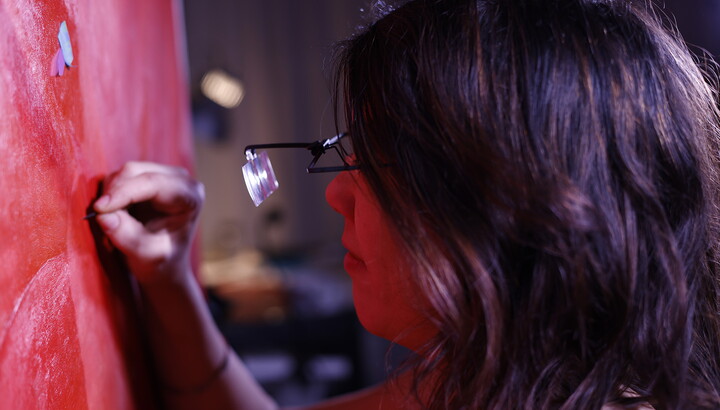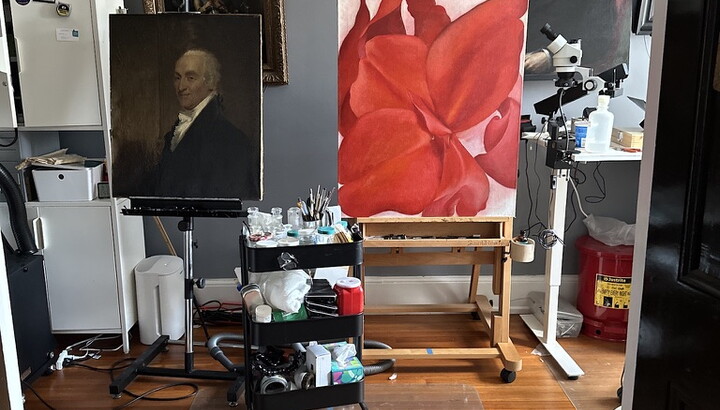The Carter Blog
Carter ARTicles
Model behavior
Sep 11, 2024
In an increasingly digital world where we have an amazing capacity to create images that replicate almost every aspect of the designed space, here at the Carter, we often find ourselves using physical models in our planning and design work. Let’s explore what a model is and how it functions as an essential tool for the designer and curator.
A model is generally a scaled representation of a three-dimensional space or object that lets us see the planned space in miniature in a more complete way than on-screen presentation techniques allow. Depending on their planned use, models can take on a variety of forms that range from simple white models that address the major components in a space to more elaborate models where every detail is fully rendered.
A model can be a scaled representation of a space or a reproduction of a piece of individual exhibition furniture at its actual size, such as a reception desk or a piece of specialty casework. These can be simple and quick mockups that are studies in basic form, or more elaborate constructions intended for uses such as testing the ergonomics of a planned table-top activity, or how projections might best be laid out within an exhibition. Models allow our designers and curators the ability to work through specific issues prior to committing to final fabrication. As an example, the Carter made extensive use of models in planning the 2019 redesign of our exhibition galleries, using models to plan the space, the implementation of our modular wall system, and placement of 2D and 3D works and graphic components throughout our galleries.
-

A color model of the education pop-up space located in the Member’s Lounge.
-

This rough white model was created for Anila Quayyum Agha: A Beautiful Despair (2021) that was used to study locations for floor level lighting used by the artist to cast shadows on the gallery walls. A drawing visible below the model shows electrical power locations located in the gallery floor that were used to cast shadows from the sculptural pieces on to the walls and floor of the exhibit.
How do you build a model? First you need to determine what the appropriate scale is for the model’s intended purpose. A three-sided ruler called an architect’s scale allows the designer to select a size that will best work for the intended purpose of the model. Models of special exhibitions at the Carter are typically built to quarter-inch scale, meaning a quarter inch in the model world is equal to one foot in the real world.
In almost every case, the process begins with drawings that are used to generate accurately sized components. Often the designer and curator might begin with a simple white massing model defining the broad parameters of the space. Moving from there, the model is fleshed out through the application of color and textures, making use of elevations, a type of drawing showing the vertical plane or face of a structure, as source material. The selected model materials are then accurately cut to shape and assembled. Images reflecting planned finishes, graphic components, and the artwork itself are then applied to those surfaces and assembled into a miniature version of the exhibit space. Additional details might be added using paint, modeling clay, and other materials to give the model a higher level of finished detail.
Using nothing more than some mat board, color printouts, glue, a bit of paint, modelling clay, and time, the model takes 2D drawings showing walls and exhibit components in elevation, a specific type of orthographic projection that uses parallel lines to map the surface of an object onto a plane, and uses these basic pieces to create a 3D rendering of the exhibit space and all it contains, right down to the scale model visitors.
With a bit of measuring and cutting, some patience, and a whole lot of white glue, we have a finished model of an exhibit space ready for use!







